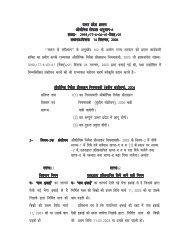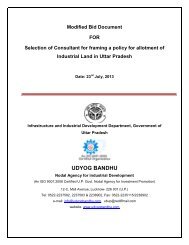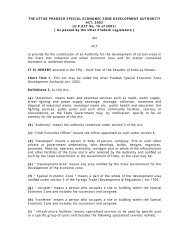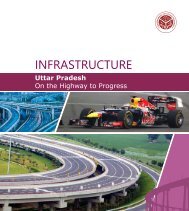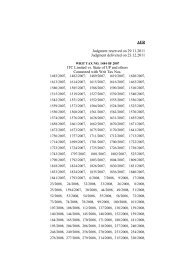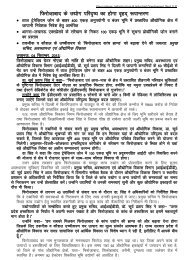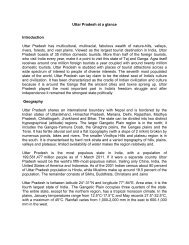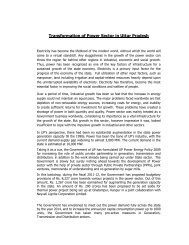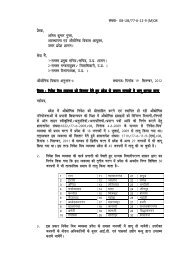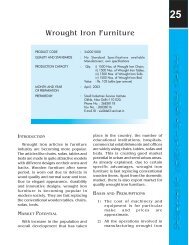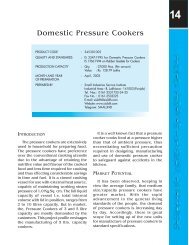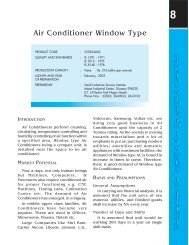PART - III - Udyog Bandhu
PART - III - Udyog Bandhu
PART - III - Udyog Bandhu
You also want an ePaper? Increase the reach of your titles
YUMPU automatically turns print PDFs into web optimized ePapers that Google loves.
It should be noted that the DCF methodology expresses the present value of the business as afunction of its future cash earning capacity. This methodology works on the premise that thevalue of a business is measured in terms of future cash flows, discounted to the present time atan appropriate discount rate. The methodology is able to capture the value of all the tangibleand intangible assets of the Company based on the possible future cash flows. The value of allthe intangibles of a company such as brand, marketing and distribution network and goodwillget captured either in the form of higher sales or as higher profits of the company incomparison to its competitors who may not have as strong or similar brand or distributionnetwork. Hence, the asset valuation approach may be useful only for a limited purpose ofvaluing the non-core assets where it is felt that DCF approach (or market multiples or bookvalue/ balance sheet approach) is not able to capture the fair value of such assets.3 Standardising The Valuation Approach & MethodologiesAlthough the aforesaid valuation methodologies being followed are broadly based on theDiscussion Paper of the Disinvestment Commission and the best market practices, it isnecessary to standardize the valuation methodology for all PSU disinvestments so that there areno variations from case to case. Therefore, all the four methodologies for valuation shouldbe followed for all PSU disinvestments, with further improvements in respect of DCFMethod and Asset Valuation Method as detailed below, for arriving at a range of valuationfigures, to arrive at the indicative Benchmark or Reserve Price.DCF MethodIn the DCF method, while computing the cash flows, cash out flows for renovation andmodernization of plant and machinery should also be discounted for arriving at realisticfigures. Since non-core assets are not reflected in the cash flows, the Asset Valuation Methodshould separately value the non-core assets and they should invariably be added to thevaluation figure arrived at by the DCF method.Asset ValuationIn general, the approach should be used primarily to value the non-core or surplus fixed assets,whose value are not appropriately accounted for in the valuation by DCF or other approaches.However, in cases, where the entity has significant non-core assets and where the applicationof Asset Valuation approach to the enterprise is deemed necessary, following should be noted:The Asset Valuation would be more realistic, if we compute the value of only therealizable amount, after discounting the non-realizable portions. The realizable market value ofall real estate assets, either owned by the company as freehold properties or on a lease/rentalbasis will be determined, assuming a non-distress sale scenario. The value would be assessedafter taking into account any defects/restrictions/encumbrances on the use/lease/sublease/saleetc. of the properties or in the title deeds etc.Since Asset Valuation normally reflects the amount which may need to be spent tocreate a similar infrastructure as that of a business to be valued or the value which may berealised by liquidation of a company through the sale of all its tangible assets and repayment ofall liabilities, adjustments for an assumed capital gains tax consequent to the (hypothetical)outright sale of these assets as also adjustments to reflect realization of working capital,settlement of all liabilities including VRS to all the employees will have to be made.149



